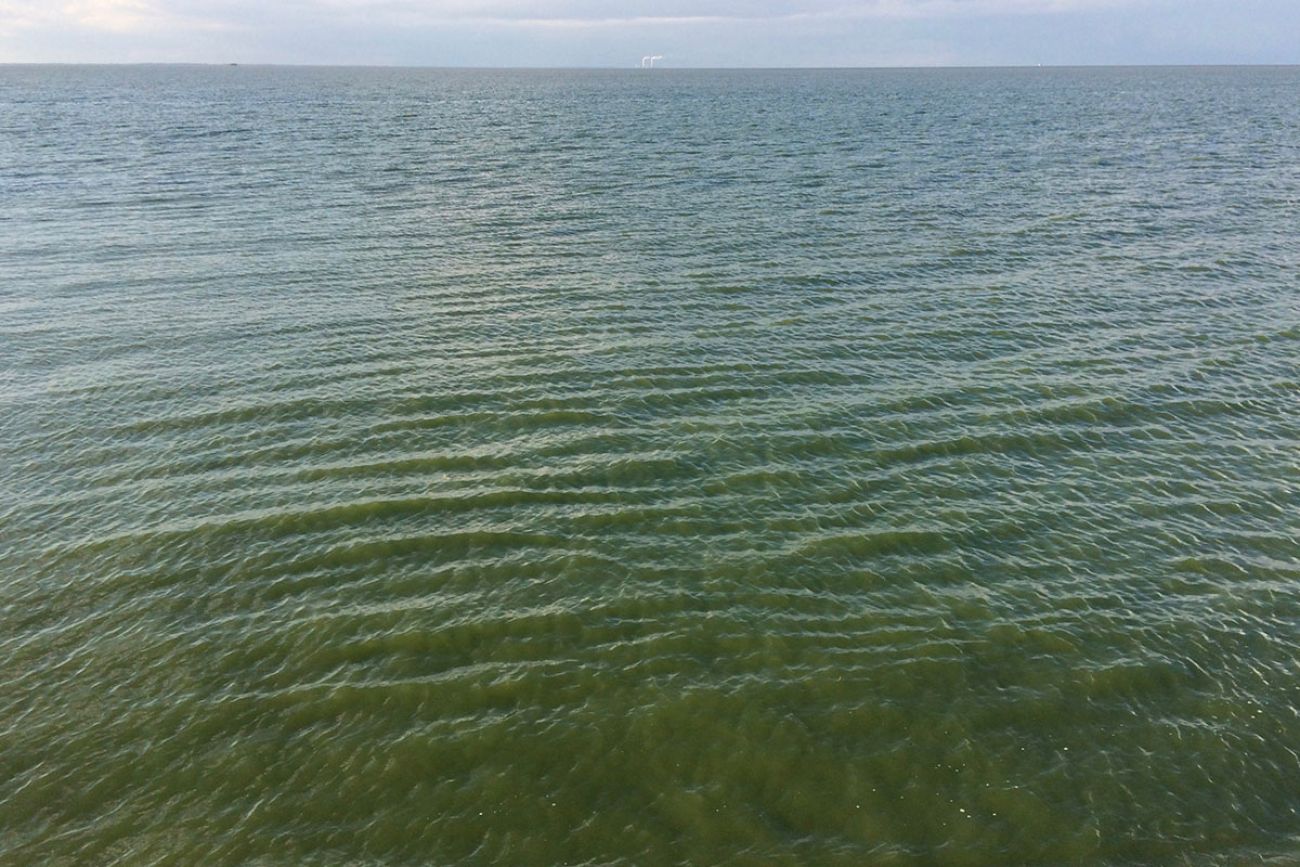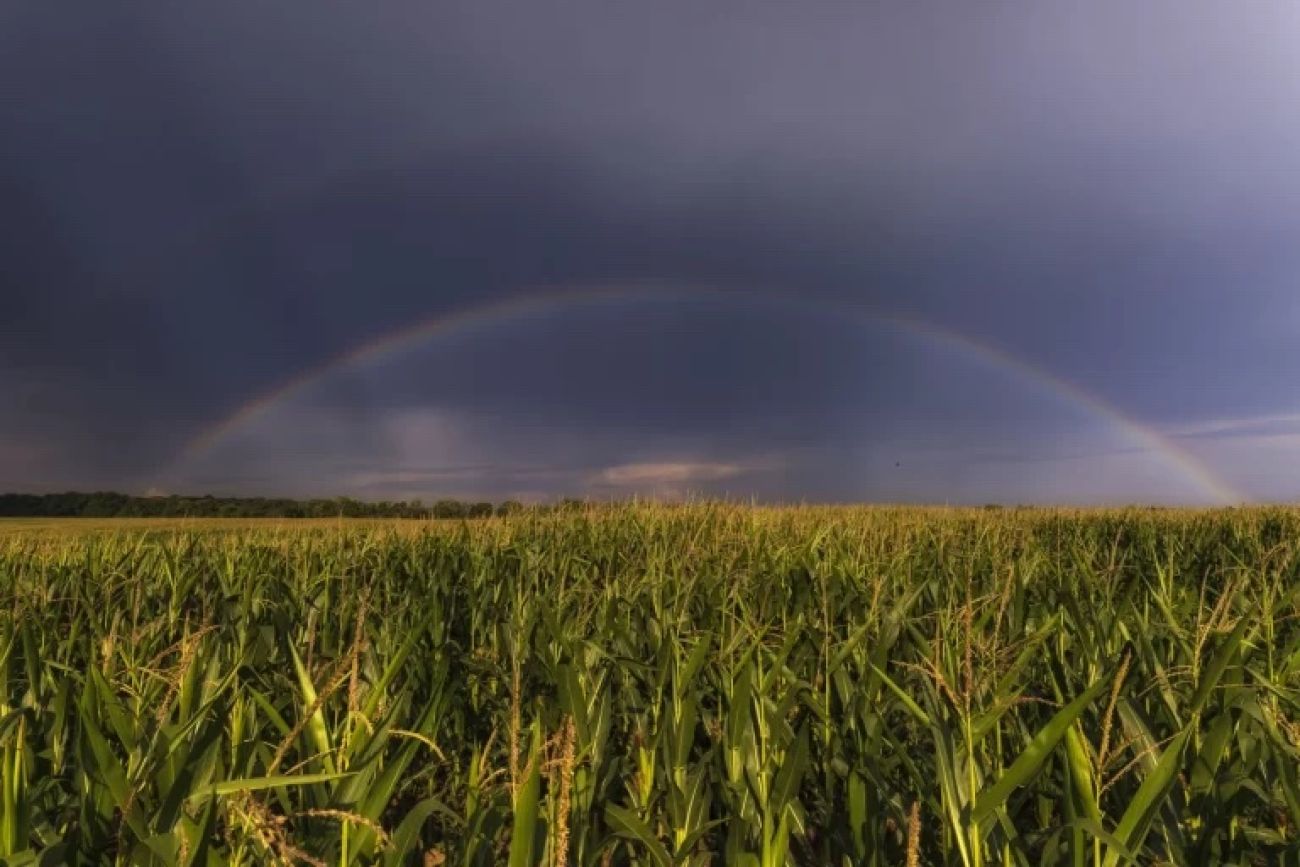Report: MI and OH must spend hundreds of millions more annually to curb toxic blooms in Lake Erie

A new report finds Ohio and Michigan combined would have to spend hundreds of millions of dollars more each year to achieve a 40 percent reduction in phosphorus in the western basin of Lake Erie if they’re to meet an agreement to control harmful cyanobacterial blooms.
The Alliance for the Great Lakes and the Ohio Environmental Council, with technical assistance from the Ann Arbor-based company LimnoTech and Chicago based Delta Institute, released the report, “The Cost to Meet Water Quality Goals In the Western Basin of Lake Erie.” It found that Michigan and Ohio are not likely to meet the 2025 phosphorus reduction goals agreed to under the Great Lakes Water Quality Agreement, calling the efforts made to date “woefully inadequate.”
Phosphorus runoff feeds toxic cyanobacterial blooms that make swimming in the water dangerous for people and animals. In 2014, cyanobacteria levels got high enough that the City of Toledo decided — out of an abundance of caution — to shut down its water system. Its Lake Erie water intake was threatened by a large harmful algal bloom.
This article is part of The Great Lakes News Collaborative, which includes Bridge Michigan, Circle of Blue, Great Lakes Now at Detroit Public Television, and Michigan Radio. It unites newsroom resources to report on the most pressing threats to the Great Lakes and drinking water supplies, including pollution, climate change, and aging infrastructure. The independent journalism is supported by the Charles Stewart Mott Foundation.
The new report finds Michigan would need to increase spending on conservation by $40 million to $65 million a year. Ohio, with the much larger area of drainage into the western basin of Lake Erie, would need to increase spending by $170 million to $250 million annually.
Related:
- For Ann Arbor water managers, ongoing battle to keep toxic chemicals at bay
- Right to water: Could 2023 be the year Michigan ends shutoffs?
- Report aims to prepare Great Lakes states for effects of climate change
“Ohio has invested hundreds of millions of dollars in H2Ohio, and Governor (Mike) DeWine has additional expenditures in that program in the budget he just proposed,” noted Great Lakes Alliance’s Agriculture and Restoration Policy Director Tom Zimnicki.
It’s a significant investment, but Zimnicki said the report finds Ohio would have to nearly double its annual investments to meet the outcomes agreed upon.
Michigan has made significant reductions in phosphorous loading at point sources, such as wastewater treatment plants. It’s approached non-point sources such as agriculture differently than Ohio. Michigan has aimed its spending on farmland primarily in the River Raisin drainage basin, targeting sites more prone to runoff. That approach has yielded better results from the money spent.
Ohio is relying on voluntary efforts, particularly H2Ohio, which is completely voluntary. About 40 percent of the farmland in the much larger Maumee River drainage basin is enrolled. That, however, does not result in a 40 percent reduction in phosphorus. Ohio plans to start doing more of the kind of geographic targeting that Michigan does.
Historically, the goal of federal and state agricultural programs is to get the money out the door and enroll as many farmers as possible.
“It’s not necessarily about enrolling people that are going to have the greatest environmental benefit or the greatest environmental impact for those dollars,” Zimnicki said, adding, “The overall cost and the needed investments are lower if we assume that the states target conservation practices to high-priority fields.

Another finding of the report is that each agricultural area will need to implement multiple in-field conservation practices. Those are ways of reducing soil erosion and phosphorus runoff such as no- or low-till farming, better fertilizer management, crop rotation, winter cover crops, constructing two-stage ditches to slow runoff during heavy rains, and the most expensive approach: constructing wetlands.
Some farmers have embraced conservation while others have not. During a farm demonstration last summer, Joe Kelpinski with the Michigan Department of Agriculture and Rural Development said agriculture is no different than any other sector of society.
“You’ve got your innovators, your early adopters, your mass that comes along, and then there’s always going to be a percentage that are just not going to do that,” Kelpinski said.
Progressive farmers say they’re doing it for future generations of farmers because the conservation practices make the soil better. Those practices also save fuel since farmers don’t have to run a tractor and equipment across the fields as often.
Land conservancy groups have offered to purchase farmland or easements of land that’s suitable for grasslands or wetlands to buffer nutrient runoff. Conservation groups such as Ducks Unlimited have offered to do the construction of wetlands.
Many farmers are leery of the offers. They don’t want to lose land that’s in crop production and they’re not thrilled about outsiders altering the landscape.
Many in Ohio have been most concerned about the larger farms and livestock operations.
An analysis issued last year from the Environmental Working Group (EWG) found 90 percent of the more than 2,500 animal feeding operations in the western basin of Lake Erie are not monitored by any government agency.
A lot of attention is given to the large confined animal feeding operations (CAFOS) that have to get permits and report how much animal waste is produced and where it’s put on fields. But EWG data found that smaller livestock operations contribute about 70 percent of the phosphorus from livestock in the basin.
Smaller farms don’t have to report how much manure their animals produce or on what fields they’re spreading it.

Much of the effort by Michigan and Ohio has been spent in reducing the amount of nutrients getting into the waterways. There also has been some effort to offer incentives for source reduction, that is, encouraging farmers to put less fertilizer on the land in the first place.
The new study from the Alliance for the Great Lakes and the Ohio Environmental Council states that should continue, but success so far has been limited.
“Decades of work via state and federal agencies, University Extension, and Soil and Water Conservation Districts has yielded limited success in reducing fertilizer application levels,” the study reported.
Ohio is on a deadline. Under a consent agreement with the U.S. Environmental Protection Agency, it has until June to come up with a final plan to control phosphorus and other nutrient runoff. The previous limits on nutrient runoff resulted in a lawsuit by the Environmental Law and Policy Center, saying the “pollution diet” implemented was not based on scientific evidence.
Despite the expensive efforts at the federal, state, and local levels, the reduction in phosphorus from non-point sources is not even close to the goals.
While the size of the harmful algal blooms can vary widely from year to year, some experts believe those variances are not indicative of the manure or commercial fertilizer applied in any given year.
During a webinar last year, the retired director of the Ohio Sea Grant and Ohio State University Stone Laboratory, Jeffrey Reutter, said the variance has more to do with how many intense storms there are in spring and early summer. He said there’s a lot of nutrients stored in the sediment of ditches and creeks. It might not be flushed out until there’s a series of severe storms in a season.
The result is there are years of smaller areas of harmful cyanobacterial blooms and then other years of much larger areas of the algal blooms and the toxic cyanobacteria that they harbor. Those years when there are smaller areas of harmful algal blooms don’t necessarily mean phosphorus runoff from fields is any less. It’s just not making it all the way to Lake Erie.
The new report sums up that its goal “is to highlight the sizable gap between current spending in the WB (western basin watershed) and the projected funding needed to achieve nonpoint source reduction targets in Michigan and Ohio.”
Michigan Environment Watch
Michigan Environment Watch examines how public policy, industry, and other factors interact with the state’s trove of natural resources.
- See full coverage
- Subscribe
- Share tips and questions with Bridge environment reporter Kelly House
Michigan Environment Watch is made possible by generous financial support from:
Our generous Environment Watch underwriters encourage Bridge Michigan readers to also support civic journalism by becoming Bridge members. Please consider joining today.
See what new members are saying about why they donated to Bridge Michigan:
- “In order for this information to be accurate and unbiased it must be underwritten by its readers, not by special interests.” - Larry S.
- “Not many other media sources report on the topics Bridge does.” - Susan B.
- “Your journalism is outstanding and rare these days.” - Mark S.
If you want to ensure the future of nonpartisan, nonprofit Michigan journalism, please become a member today. You, too, will be asked why you donated and maybe we'll feature your quote next time!






